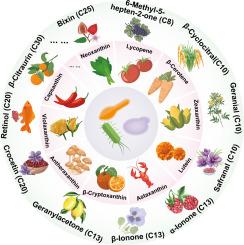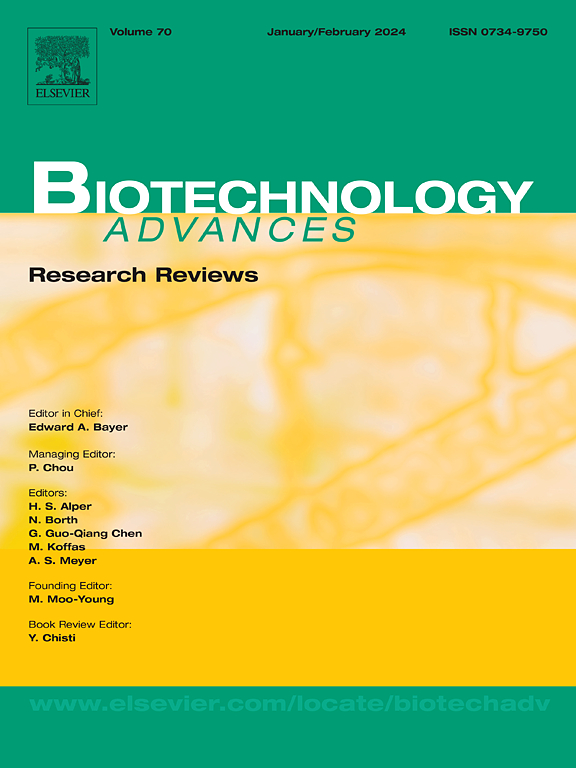类胡萝卜素及其裂解产物的工程微生物生产:最新进展与展望。
IF 12.5
1区 工程技术
Q1 BIOTECHNOLOGY & APPLIED MICROBIOLOGY
引用次数: 0
摘要
类胡萝卜素及其裂解产物(称为类胡萝卜素)具有抗氧化活性、香味和颜色等功能特性,在制药、保健、化妆品和食品工业中非常重要。目前,类胡萝卜素和类伪胡萝卜素主要是通过从天然来源提取或化学合成获得的,这两种方法都与效率低下、环境影响和产品限制有关。代谢工程和合成生物学的不断发展使异源生物合成成为一种有前途、高效和可持续的生产策略。本文综述了类胡萝卜素和类胡萝卜素生物合成的最新进展,详细介绍了甲羟戊酸和磷酸甲基赤藓糖醇的主要生物合成途径,重点介绍了类胡萝卜素裂解的酶。我们还强调了微生物生产的重大进展,强调了旨在提高微生物生产效率的各种代谢工程策略。最后,讨论了这些化合物生物合成的潜在研究方向。本文章由计算机程序翻译,如有差异,请以英文原文为准。

Engineered microbial production of carotenoids and their cleavage products: Recent advances and prospects
Carotenoids and their cleavage products (referred to as apocarotenoids) have functional properties such as antioxidant activity, fragrance, and color that are important in the pharmaceutical, healthcare, cosmetics, and food industries. Currently, carotenoids and apocarotenoids are primarily obtained through extraction from natural sources or chemical synthesis, both of which are associated with inefficiencies, environmental impact, and product limitations. Ongoing advances in metabolic engineering and synthetic biology have positioned heterologous biosynthesis as a promising, efficient, and sustainable production strategy. This review summarizes recent progress in carotenoid and apocarotenoid biosynthesis, detailing the key biosynthetic pathways originating from mevalonate and methylerythritol phosphate, with a focus on the enzymes involved in carotenoid cleavage. We also highlight significant advancements in microbial production, emphasizing various metabolic engineering strategies aimed at enhancing microbial production efficiency. Lastly, we discuss potential future research directions for the biosynthesis of these compounds.
求助全文
通过发布文献求助,成功后即可免费获取论文全文。
去求助
来源期刊

Biotechnology advances
工程技术-生物工程与应用微生物
CiteScore
25.50
自引率
2.50%
发文量
167
审稿时长
37 days
期刊介绍:
Biotechnology Advances is a comprehensive review journal that covers all aspects of the multidisciplinary field of biotechnology. The journal focuses on biotechnology principles and their applications in various industries, agriculture, medicine, environmental concerns, and regulatory issues. It publishes authoritative articles that highlight current developments and future trends in the field of biotechnology. The journal invites submissions of manuscripts that are relevant and appropriate. It targets a wide audience, including scientists, engineers, students, instructors, researchers, practitioners, managers, governments, and other stakeholders in the field. Additionally, special issues are published based on selected presentations from recent relevant conferences in collaboration with the organizations hosting those conferences.
 求助内容:
求助内容: 应助结果提醒方式:
应助结果提醒方式:


